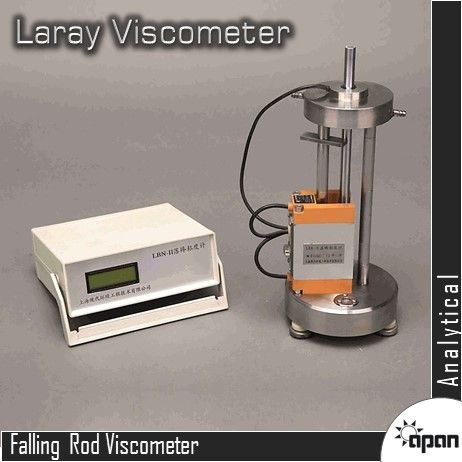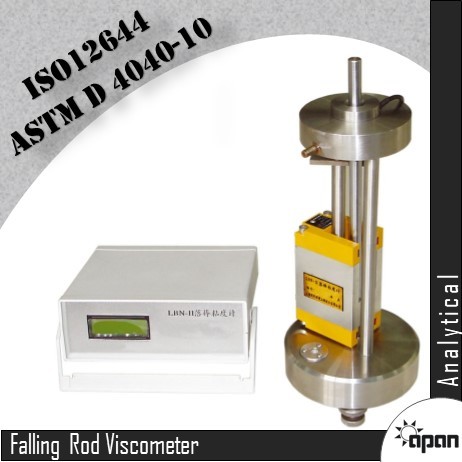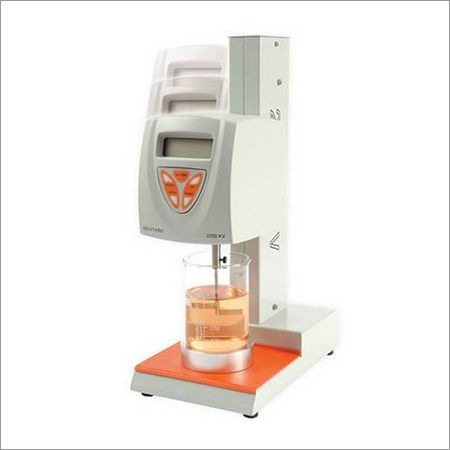Call : +919624419419, +919723419419


Falling Rod Viscometer
Product Details:
X
Product Description
As a Authorized dealer we are engaged in providing the broad assortment of wide gamut of Analytical Laboratory Instruments
Falling Rod Viscometer Laray Viscometer is an instrument applicable to determinethe rheological properties apparent viscosity pseudoyield value shortness etc of NonNewtonian liquids viscosityincreases with shear rate Larya Viscometer designed and produced by ourcompany is in accordance with the specification of ASTM D 404010 and ISO126441996E Graphic technology Determination of rheological properties of pasteinks and vehicles by the Falling Rod Viscometer Its principle measuring falltimes by loading the rod with different load weights pass the gap which isfilled with the test fluid By applying linear regression methods bymeans of suitable flow model Casson model Bingham model or Power Law model to obtain apparent viscosity yield value shortnessratio of sample
Specification
Input voltage 220V 50Hz
Range of apparent viscosity 2200Pas
Dimensions of the falling rod 12x300mm
Weight of the falling rod 132g
ets of load weights total 4075g 2550100200200500100010001000g
Overall dimensions 140mm x 140mm x 300mm length by width by height
Weight including instrumen tweight box controller 18kg
Test procedure
Prior to usethe test sample about 5g shall be kneaded by a spatula and equilibrated totest temperature The sample shall be homogeneous and not contain any coarseparticles An amount of the test sample sufficient to coat the rod and apertureis applied to the lower part of the rod
The bottom of the rod is inserted into the aperture of guide bush andslightly fall on the turntable the sample is distributed uniformly around thegap the gap is filled with the test fluid which is sheared when the rod fallsby using fingertip lift the bottom of the rod 20mm then fall on theturntable
Load weights to be loaded on top of the rod remove a turntable to letfalling rod fall the rod and the aperture are wetted by the liquid Make surethat photoswitch temperature sensor are working normally temperatureindicator display starting temperature when starting falling time indicatorstarts to display seconds temperature indicator display finishing temperaturewhen finishing falling time indicator display actual fall time temperatureresume to display actual temperature of guide bush after pulling up the rodtime automatically clear
Avoid anyscoring operation for the rod the metal spatula should not be allowedoperation for the rod Dont do falling operation under the condition of notest sample After finishing falling the rod is lightly pulled up and restedon the support After each run the rod is scraped with the spatula and theliquid which was scraped off is reapplied on the lower part of the rod the aperture of guide bush
The proper sets of load weights is selected according to the expectedresults The fall time with the heaviest load weight should normally be in therange from 4s to 10s ASTM D404005 recommend 12s Series of load weights arecombined to sets Sets of load weights with the following masses should beused Unit g
A 5000 4000 3000 2000 1000
B 3000 2000 1500 500
C 1500 1000 800 500
D 800 600 400 200
E 400 300 200 100
F 200 100 50 0
The sample is tested with the heaviest load weight at the beginning of thetests load weighs in descending order Fall time during the test with theheaviest load weight varies less than 05s the sample is tested with theselected series of load weights in descending order The fall time shall notexceed 60s After each run the rod is scraped with the spatula and the liquidwhich was scraped off is reapplied on the lower part of the rod During thetest additional liquid shall not be added The sample is tested with each loadweight for three times By loading the rod with different load weights recordthe fall time every time correct to 001s and temperature of guide bushduring measurement correct to 01
Operationshall be done quickly and cant be interrupted the whole operation shall befinished within 510 minutes Many printing ink and vehicles have strongvolatile solvent only if strictly control actual exposition time otherwisevolatile loss cause large deviation of test result during operation If foundseveral continuous falling with the same load weight fall time could belonger it indicates that obvious volatile loss exists
Viscosity is strongly temperature dependent therefore the temperature shallbe controlled and monitored Principally if the test temperature varies fromreference temperature 25 by more than 02 before the runs the thermostatic equipment shall be reset if thetemperature during the test varies more than 1 the test shall be repeated
After the test the instrument shall be cleaned immediately with a lintfreewiper and a suitable solvent especially the rod guide bush
ISO12644
Graphic technology Determination of rheological properties of paste inks and vehicles by the falling rod viscometer This International Standard specifies the procedure for determining theviscosity and yield value of paste inks and vehicles which are unreactive under normal room conditions It is applicable to inks in the apparent viscosityrange of 2 Pa s to 200 Pa s
ASTM D 404010
Standard Test Method for Rheological Properties of Paste Printing and Vehicles by the FallingRod Viscometer Apparent viscosity at the relatively high shear rate of 2500 does not completely define the rheological properties of printing inks but is useful in the practical control of ink viscosity during production and the specification acceptance between supplier and purchaser
The slope of the power law plot is the preferred measure of nonNew tonianism The yield value which is obtained by extrapolation of highshear measurements to a shear rate approaching zero does not conform to the definition of the true yield stress The yield value and other low shear parameters are also subject to a high degree of variabilit
Tell us about your requirement

Price:
Quantity
Select Unit
- 50
- 100
- 200
- 250
- 500
- 1000+
Additional detail
Mobile number
Email
Other Products in 'Analytical Lab and Field' category
 |
APAN ENTERPRISE
All Rights Reserved.(Terms of Use) Developed and Managed by Infocom Network Private Limited. |

 Send Inquiry
Send Inquiry





